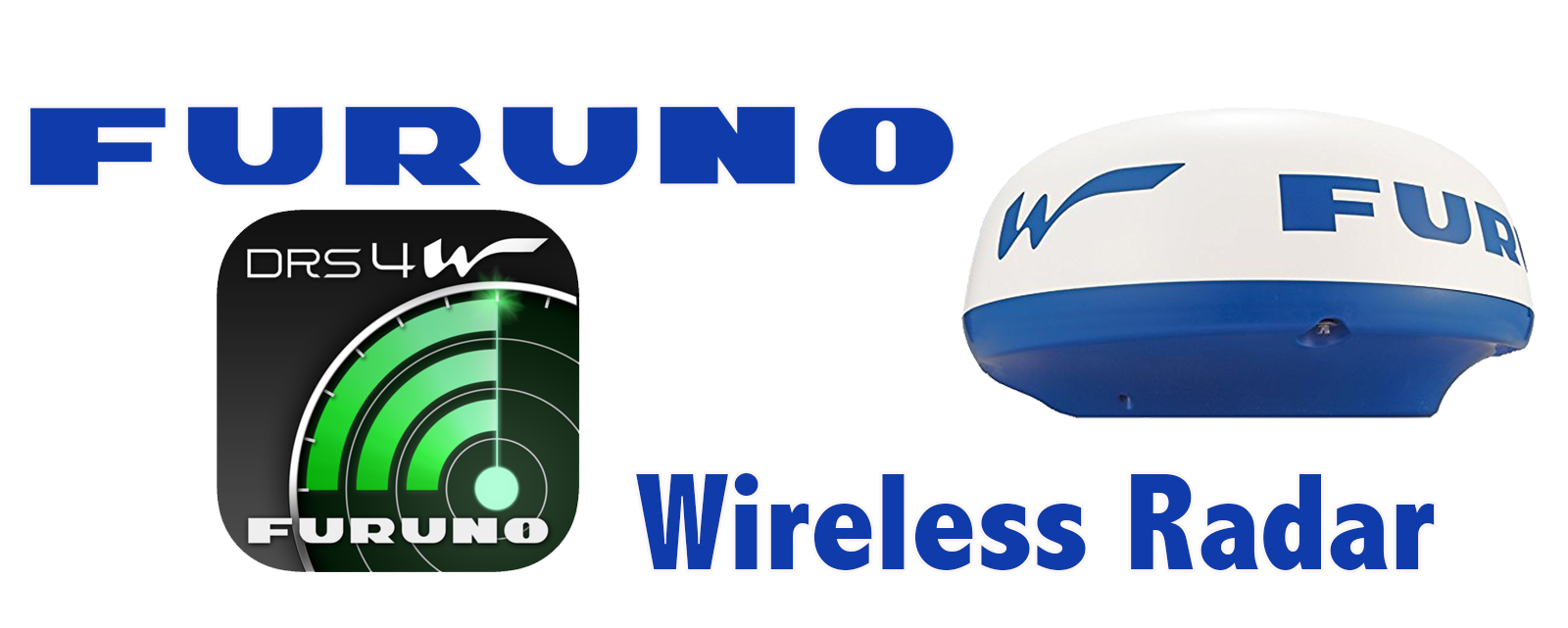
Technically, we don't even really need radar, let alone wireless radar. We could just stay put when it's foggy, only venturing out when it's clear, calm, and only during daylight hours. But we like to use our boat year 'round, and we don't want to wait for fog to lift in order to get somewhere. So we definitely want radar. But did we need it to be wireless?
When we bought our boat, Traveler, she came equipped with an older, functioning Furuno unit with a single monochromatic CRT display in the pilothouse. And it worked just fine. Until it didn't. A few years ago it developed a strange, spontaneous powering off syndrome that only seemed to happen when we needed it most. Which makes sense because we only have the radar on if it's necessary.
So when it came time to replace the aging 31-year old unit, Lisa told me about the new wireless radar she saw at one of the boat shows. We researched the Furuno 1st Watch Wireless Radar (DRS4W) and determined that it was just right for us, as we've been transitioning to iOS-based navigation systems. That it was essentially half the cost of new Multi-Function Display radar systems was even better.
Removing the old radome was pretty straightforward. We ended up having to take down overhead panels in the galley and pilothouse to pull the old, thick data cable down from the mast. On the mast itself, we replaced the old "homemade" radome mount with a new custom mount from Seaview. We measured the mast at multiple attachment points including the angle of rake, and the fabricators at Seaview made a beautiful, powder-coated mount that fit absolutely perfectly. Seaview makes many different mounts for Furuno radomes (and other manufacturers, too), so it was no surprise our new Furuno DRS4W radome bolted to the mount perfectly as well.

We ran the thinner 12-volt power cable up the same holes the old data cable went through and secured to the radome. We had already downloaded the free Furuno DRS4W app to both our iPhones and two iPads. The last step of the easy installation was to power up the unit.
While the radar was in its 90-second warmup stage, we connected to the radome via wifi. Once we entered the radar's password the first time, it became a legacy access point on our devices so we don't have to enter the password again. Opening the app on the iPad brought us to the control screen. Once the unit was through the warmup phase we pressed the STBY button to TX, or transmit.
From this point, the Furuno 1st Watch Wireless Radar did all the basic things you expect a "new" radar to do (which we'll go over in a subsequent post). But it's the things the wireless DRS4W does that you don't expect a radar to do which has impressed us.
For us, the best part is the ability to take our iPhone or one of the iPads up to the flybridge. Even with our old radar, we didn't have a second display at the upper helm (which is uncovered aboard Traveler). We've had plenty of those foggy days where you can't see more than a hundred yards, yet the sun is shining warmly overhead. I'd typically stay in the pilothouse at those times because that's where the only radar display was. Now, I just carry my iPhone with me and I have radar at my proverbial fingertips.
My other favorite part of this wireless system is the Furuno DRS4W will seamlessly overlay on the TIMEZERO TZ iBoat navigation charts. In 2D, 3D, or even with satellite image in 3D! We had previously been using Navionics charts on the iPad, but I'm really starting to like the more fully featured TZ iBoat app. Especially when I can overlay the radar on it. We'll be posting more about our experiences with the TZ iBoat app as well.

But to answer the big question, does anyone really need wireless radar? If you are coastal cruisers like us, migrating more and more to iOS-based navigation - and you're not crossing oceans - we can honestly say the Furuno DRS4W should be on your list to check out. And with our introuctory $995 WIRELESS SPECIAL you can get a total of $250 OFF ($1,245 MSRP) until January 31, 2019! During checkout, use coupon/promo code: WIRELESS100 to get the $995 price and FREE SHIPPING!
For us, with our increasingly iOS-based pilothouse navigation systems, the Furuno 1st Watch Wireless Radar fits perfectly. And with the ability to carry up to two devices simultaneously anywhere on the boat and still maintain radar contact, we think that's pretty cool (although we always have someone at the helm in appropriate situations).
Comments will be approved before showing up.

Memories are made on the water. Often it's the skipper's (Dad's) job to ensure everyone has a good time and arrives safely at the end of the day or journey. Usually the thanks Captain/Dad gets is in the form of satisfied, happy faces. Which is enough! We decided to take that one step further, however, and made a collection of 12 items that show just how much you appreciate everything he does.

As of today, Section 301 Tariffs have impacted more than 300 commonly used components, materials, and parts for recreational boats in the United States (source, National Marine Manufacturers Association). Even our little online store is beginning to see price increases and supply chain disruptions...

Darren O'Brien
Author